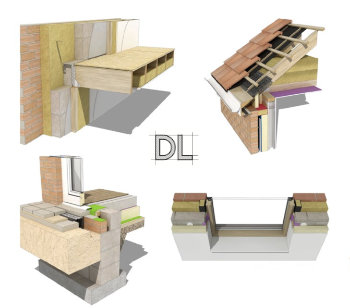Acidification potential
Acidification potential refers to the amount that different compounds contribute to acid rain. This includes sulfur dioxide (SO2), nitrogen oxides (NOx), nitrogen monoxide (NO), nitrogen dioxide (N2O), as well as a variety of other substances.
Acidification potential is one of the core environmental impact indicators of EN 15804:2012+A2:2019/AC:2021, which is used as guidance in the generation of the lifecycle assessment (LCA) methodology used to create product environmental footprints (PEF). It is also considered one of the mandatory environmental performance indicators for the calculation, assessment and generation of environmental product declarations (EPDs).
In the same way that the global warming potential (GWP) of different pollutants are converted to ratios (for example CO2 being 1:1 CO2 eq and Methane being 36.8 CO2 eq) Acidification potential is usually estimated in the same way but as a characterisation of SO2-equivalence. For example:
- 1 kg ammonia = 1.88 kg SO2 eq.
- 1 kg nitrogen dioxide = 0.7 kg SO2 eq.
- 1 kg sulphur dioxide = 1 kg SO2 eq.
References; AP, accumulated excedence, EN 15804. Version: August 2021. Seppälä et al. 2006, Posch et al. 2008
[edit] Related articles on Designing Buildings
- Eutrophication potential EP.
- Green Guide to Specification.
- Life cycle assessment.
- Material procurement.
- Product carbon footprint PCF.
- Product Category Rules.
- Product Environmental Footprint PEF
- Product Category Rules.
- Product Environmental Footprint PEF
- Responsible sourcing of construction products.
- Sustainable development.
- Sustainable materials for construction.
- Types of water.
- Water consumption.
- Water resources.
- Water.
- Whole life costs.
Featured articles and news
From studies, to books to a new project, with founder Emma Walshaw.
Types of drawings for building design
Still one of the most popular articles the A-Z of drawings.
Who, or What Does the Building Safety Act Apply To?
From compliance to competence in brief.
The remarkable story of a Highland architect.
Commissioning Responsibilities Framework BG 88/2025
BSRIA guidance on establishing clear roles and responsibilities for commissioning tasks.
An architectural movement to love or hate.
Don’t take British stone for granted
It won’t survive on supplying the heritage sector alone.
The Constructing Excellence Value Toolkit
Driving value-based decision making in construction.
Meet CIOB event in Northern Ireland
Inspiring the next generation of construction talent.
Reasons for using MVHR systems
6 reasons for a whole-house approach to ventilation.
Supplementary Planning Documents, a reminder
As used by the City of London to introduce a Retrofit first policy.
The what, how, why and when of deposit return schemes
Circular economy steps for plastic bottles and cans in England and Northern Ireland draws.
Join forces and share Building Safety knowledge in 2025
Why and how to contribute to the Building Safety Wiki.
Reporting on Payment Practices and Performance Regs
Approved amendment coming into effect 1 March 2025.
A new CIOB TIS on discharging CDM 2015 duties
Practical steps that can be undertaken in the Management of Contractors to discharge the relevant CDM 2015 duties.
Planning for homes by transport hubs
Next steps for infrastructure following the updated NPPF.






















